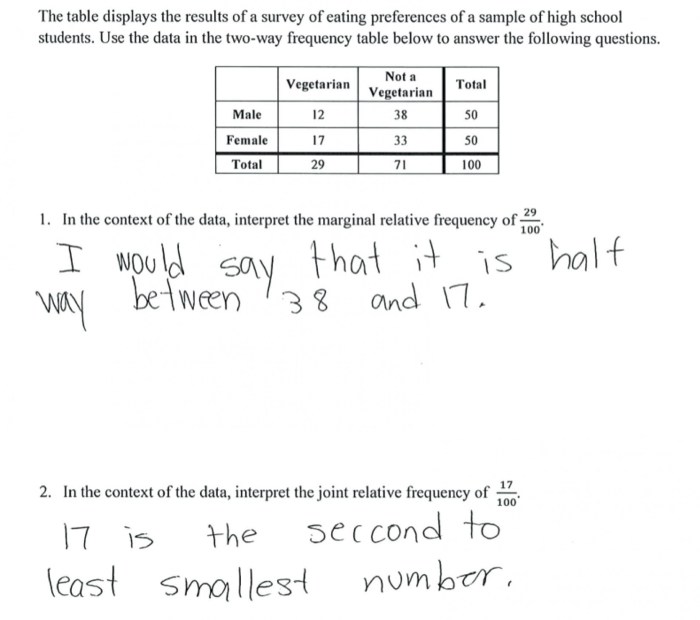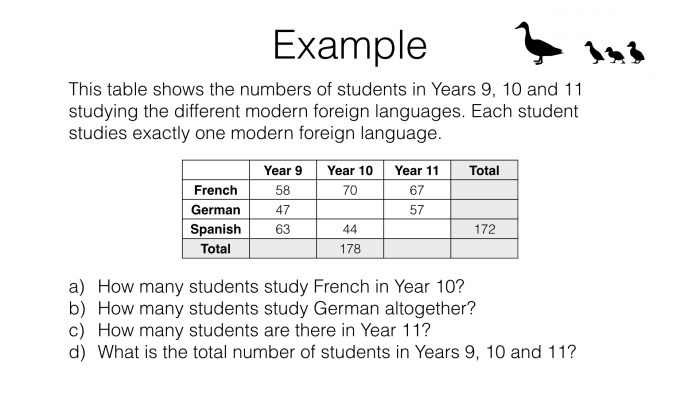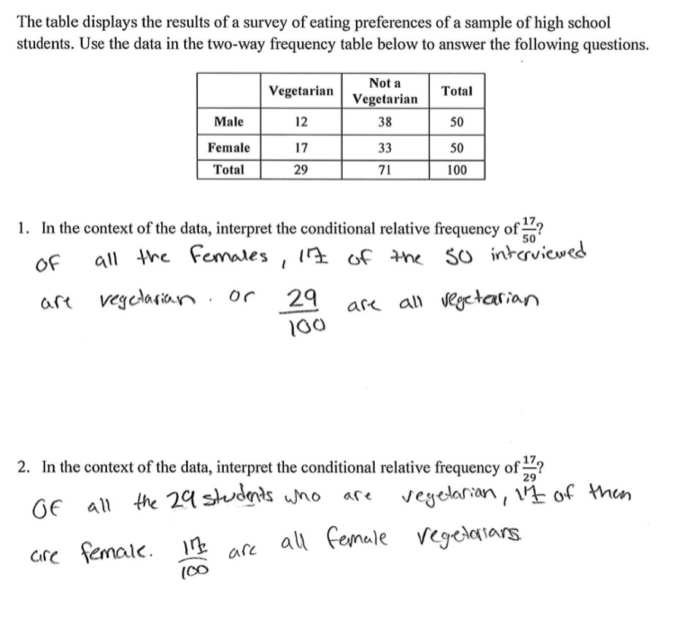Two way frequency table worksheet with answers – Embark on an educational journey with our comprehensive Two-Way Frequency Table Worksheet with Answers. This invaluable resource empowers you to delve into the intricacies of data analysis, providing a structured approach to understanding relationships and patterns within your data.
Within this worksheet, you will encounter a step-by-step guide to constructing and interpreting two-way frequency tables, equipping you with the knowledge and skills to extract meaningful insights from complex datasets.
Two-Way Frequency Table Overview

A two-way frequency table, also known as a contingency table, is a tabular representation that displays the frequencies of occurrence for different combinations of two categorical variables.
It consists of rows and columns, where each row represents one category of the first variable and each column represents one category of the second variable. The cells within the table show the number of observations that fall into each combination of categories.
For example, a two-way frequency table could be used to display the number of students in a school who have different hair colors and eye colors. The rows would represent the hair colors (e.g., blonde, brown, black, red), and the columns would represent the eye colors (e.g.,
blue, brown, green, hazel).
Creating a Two-Way Frequency Table
To create a two-way frequency table, follow these steps:
- Identify the two categorical variables of interest.
- Create a table with rows representing the categories of the first variable and columns representing the categories of the second variable.
- For each combination of categories, count the number of observations that fall into that combination.
- Enter the counts into the corresponding cells of the table.
Analyzing a Two-Way Frequency Table

Two-way frequency tables can be analyzed to identify patterns and trends in the data. Some common ways to analyze a two-way frequency table include:
- Looking for patterns in the rows and columns.
- Calculating percentages or proportions for each cell.
- Conducting statistical tests to determine if there is a significant relationship between the two variables.
Formatting a Two-Way Frequency Table

Two-way frequency tables can be formatted using HTML table tags. Here is an example of a two-way frequency table formatted using HTML:
| Hair Color | Blue Eyes | Brown Eyes | Green Eyes | Hazel Eyes |
|---|---|---|---|---|
| Blonde | 10 | 15 | 5 | 2 |
| Brown | 12 | 20 | 8 | 3 |
| Black | 5 | 10 | 3 | 1 |
| Red | 3 | 5 | 2 | 0 |
Examples and Applications: Two Way Frequency Table Worksheet With Answers

Two-way frequency tables are used in a variety of fields, including:
- Marketing: To understand the relationship between customer demographics and product preferences.
- Healthcare: To track the incidence of diseases among different population groups.
- Education: To analyze the relationship between student characteristics and academic performance.
Detailed FAQs
What is the purpose of a two-way frequency table?
A two-way frequency table is a data visualization tool used to display the frequency of occurrence of two categorical variables within a dataset.
How do I create a two-way frequency table?
To create a two-way frequency table, first identify the row and column variables in your dataset. Then, count the number of occurrences of each combination of row and column values.
How do I analyze a two-way frequency table?
To analyze a two-way frequency table, look for patterns and trends in the data. You can also calculate measures of association, such as the chi-square statistic, to determine the strength of the relationship between the two variables.